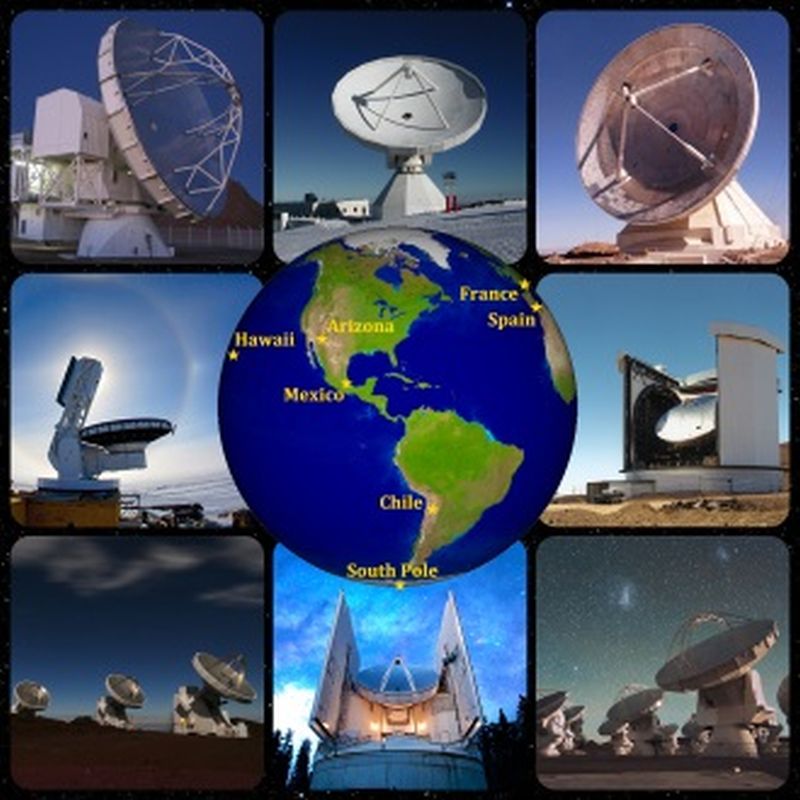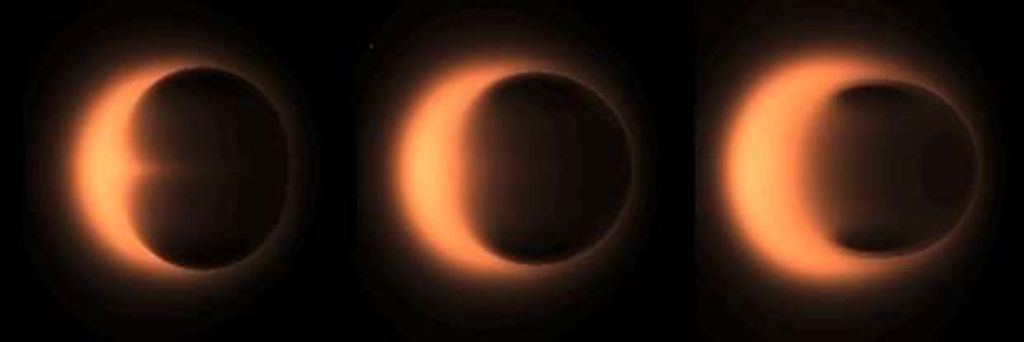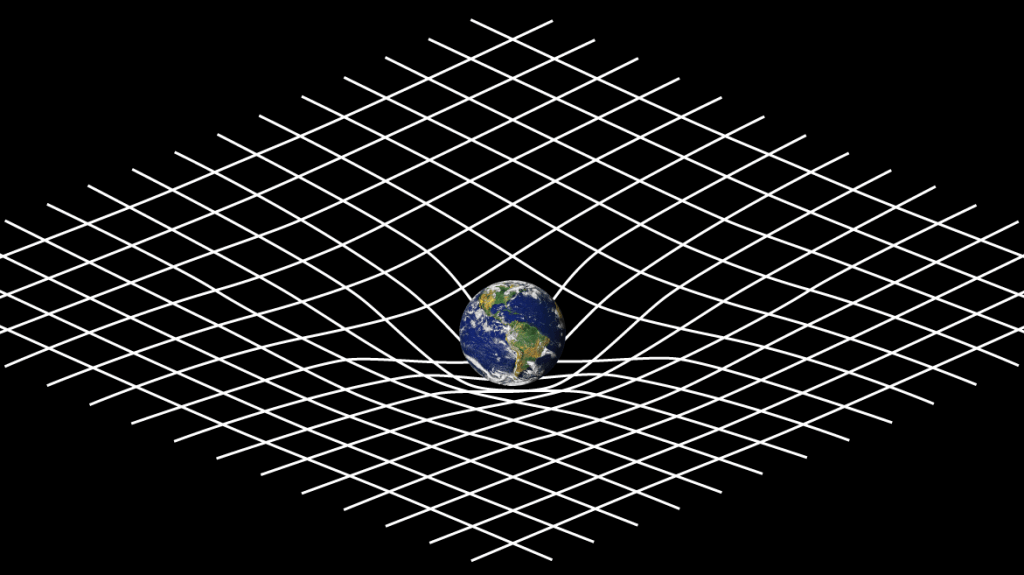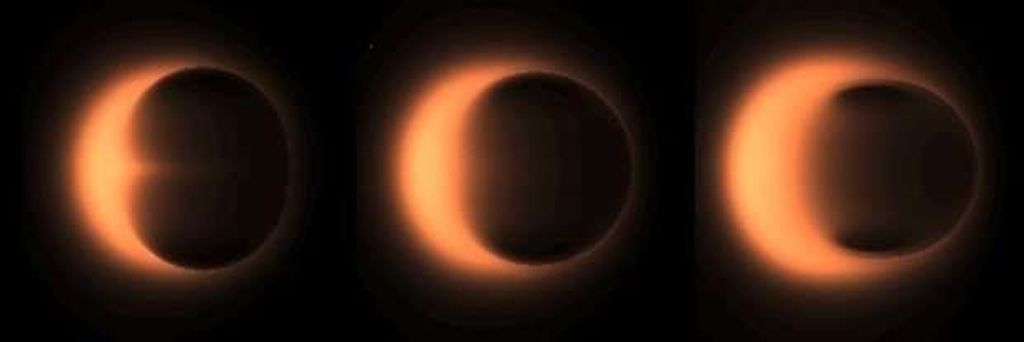The largest object in our night sky—by far!—is invisible to us. The object is the Super-Massive Black Hole (SMBH) at the center of our Milky Way galaxy, called Sagittarius A. But soon we may have an image of Sagittarius A’s event horizon. And that image may pose a challenge to Einstein’s Theory of General Relativity.
Nobody’s ever seen a black hole’s event horizon. The intense gravitational pull prevents anything, even light, from escaping. The event horizon is the point of no return. No matter, no light, and no information can escape. But we may be close to getting an image of Sagittarius A’s event horizon, thanks to the Event Horizon Telescope (EHT).
The EHT is an international collaboration designed to investigate the immediate surroundings of a black hole. It’s not one telescope, but rather a linked system of radio telescopes across the globe all working together using interferometry. By measuring the electromagnetic energy from the region surrounding the black hole with multiple radio dishes at multiple locations, some of the properties of the source can be derived.

Researchers with the EHT hope that their observations will eventually provide images of the intense gravitational effects that we expect to see near the black hole. They also hope to detect some of the dynamics at work near the hole as orbiting matter in the accretion disk reaches relativistic speed.
The EHT project gathered data on Sagittarius A, and one other black hole called M87 in the center of the Virgo A galaxy, over a four year period. That four years ended in April 2017, but the team of 200 scientists and engineers are still analyzing the data. In the meantime, the team has released computer model images of what they hope to see.

The image may not seem like much, but it is significant. It’s the equivalent of reading a newspaper headline on the moon while standing on Earth. The image may help us answer some confounding questions regarding black holes:
- What role did black holes play in the formation of galaxies?
- What do light and matter look like as they fall toward a black hole?
- What are the streams of energy shooting out of black holes made of?
There is also a chance that the image EHT produces of Sagittarius A will mean that Einstein’s Theory of General Relativity will need to be updated. (Though it’s usually a bad idea to bet against Einstein.)
Black Holes and the Event Horizon
Black holes are basically a star’s corpse. When a very massive star burns through all of its fuel, it collapses into an extremely dense point, or singularity. The black hole has incredibly powerful gravitational pull, which pulls gas and dust towards it. Once every 10,000 years or so, Sagittarius A even consumes a star.
The event horizon is like a shell around the black hole. Once any matter—or even light—reaches the event horizon, it’s game over. The black hole grows in size as it consumes matter, and the event horizon expands too.
Sagittarius A, our very own Super-Massive Black Hole (SMBH), is massive. It has a mass 4 million times greater than the Sun. But even so, it’s not that large compared to other SMBH’s. The other SMBH in the EHT project is way bigger, with a mass of 7 billion times that of the Sun.
The EHT will produce an image of the event horizon by studying the area around the black hole. Something happens to the material as it falls into the black hole. It forms an accretion disk of swirling gas and dust that’s basically in a holding pattern until it gets sucked into the hole. That material speeds up to relativistic speeds, which means close to the speed of light. When that happens, the material is superheated, and it emits energy.

But the black hole is so powerful gravitationally that it bends that light in a phenomenon called gravitational lensing. This lensing creates a dark region that’s called the black hole’s shadow. According to theory, the event horizon should be about 2.5 times larger than the shadow. So once scientists have an image of the shadow, they know the size of the event horizon. The size of the event horizon is proportional to the black hole’s mass. So in the case of Sagittarius A, it should be about 24 million km (15 million miles) in diameter.
So there won’t be any pictures of the black hole itself, but there will be images of the shadow the black hole casts. Scientifically, that’s a big leap in our understanding of black holes. And in case there’s any doubt about the existence of black holes, the image of the shadow will provide solid evidence that black holes are indeed out there.
The EHT and the Jets
Despite Sagittarius A’s massive size, it is tiny in the sky. It’s much too small for a single telescope to see. That’s why the EHT was implemented. It combines 7 separate radio telescopes around the world into one large virtual telescope using a technique called Very Long Baseline Interferometry (VLBI), something that astronomy buffs are familiar with. The virtual telescope has much greater resolving power than a single scope, and allowed astronomers to study the area near Sgr. A.
During a one week period in April of 2017, the EHT team pointed all seven of its ‘scopes at Sgr A, and seven atomic clocks recorded the timing of the arrival of signals at each telescope. By studying and combining the signals, scientists can create a picture of Sgr A. This is a time-consuming process that’s ongoing.
The energetic jets that stream out of a black hole’s vicinity are of particular interest to researchers. The matter swirling around in a black hole’s accretion disk heats up to billions of degrees. Some of it enters the black hole, but not all of it.
The energetic jets are the part that escapes the accretion disk. They travel at close to the speed of light for tens of thousands of light years. Scientists want to know more about them.
When it comes to Sgr. A, we don’t know if there are jets. It hasn’t been very active in the last few decades, so there may be no jets. But if they’re there, the EHT will pick up there radio signals. Then we may get answers to some fundamental questions about the jets:
- How do they begin?
- How do they accelerate to relativistic speeds?
- How do they stay tightly focused?
- What exactly are they made of?
Is Einstein’s Theory of General Relativity in Trouble?
Probably not. But there’s a chance.
Most of our Solar System is a pretty prosaic, workaday place. And that’s where most of our observational evidence supporting General Relativity comes from. But the region surrounding a black hole is not a normal neighbourhood.
Conditions there are extreme. Intense gravity, superheated jets of material moving at near the speed of light, and the event horizon. But in regards to General Relativity, it’s mostly about gravity and light.

General Relativity predicts that the gravity of the black hole will curve space time and draw everything toward it, including light. The data gathered by EHT will provide measurements of this phenomenon which can be compared with Einstein’s predictions. If the data matches predictions, Einstein wins again.
General Relativity makes another prediction: the shadow cast by the accretion disk should be circular. If it’s not circular, and is more of an ovoid, then the formulas in General Relativity are not completely accurate.
John Wardle is an astronomer who has been studying black holes for decades, back when they were still just a theoretical construct. He’s heavily involved in the EHT project. Wardle thinks that General Relativity will stand up to this test, and that Einstein will win again. But if General Relativity fails this test, we’ll find ourselves in a very difficult and strange situation.
“Then we’ll be in a severe straight jacket because you can’t make changes that mess up all the other bits that do work,” said Wardle. “That would be very exciting.”
Sources:
- Brandeis University Press Release: “What does a black hole look like?”
- Event Horizon Telescope
- Wikipedia Entry: Interferometry
- Wikipedia Entry: Event Horizon

